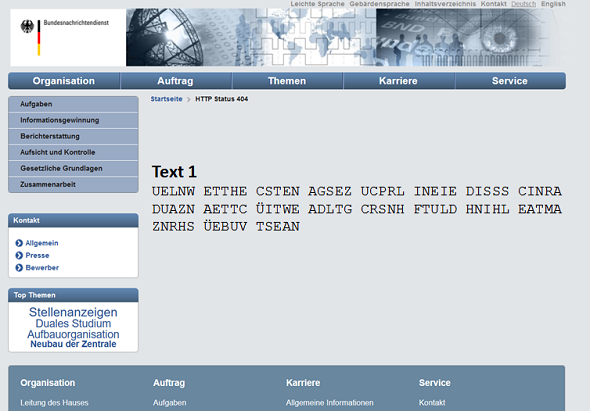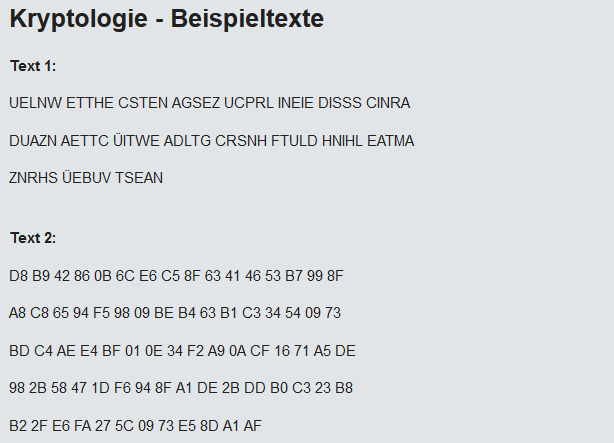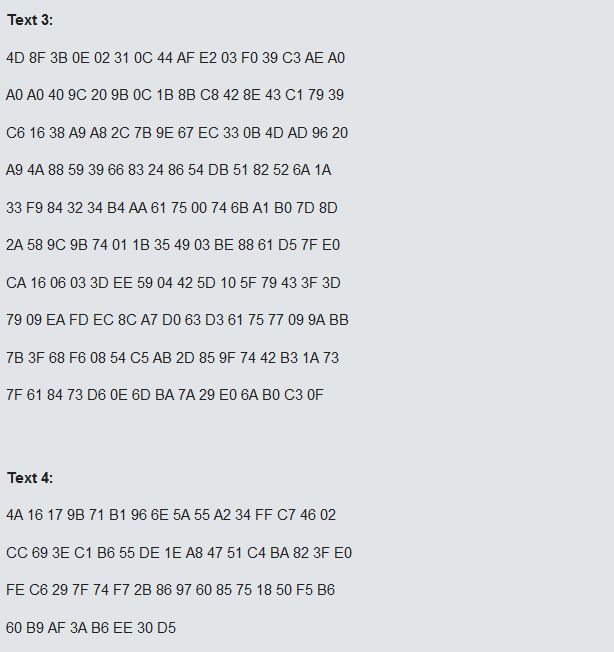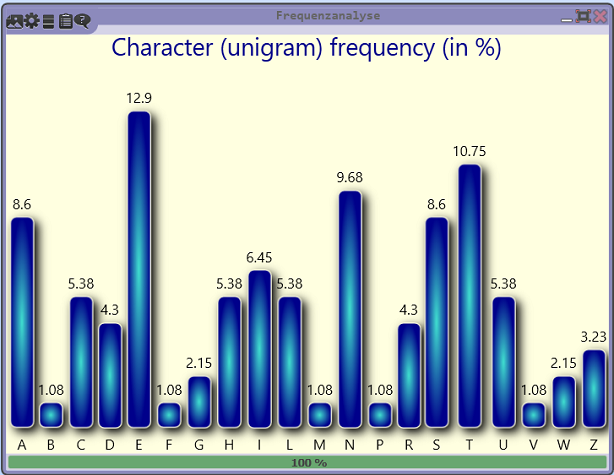In 2013 the German intelligence service BND published four challenge ciphers. To my knowlege, the solutions have never been published.
You want to become a professional codebreaker? If so, look out for crypto challenges the secret services of your country have published. Among others, the NSA, the British GCHQ, the German BND and some Australian service are known to publish cryptograms once in a while in order to attract skilled cryptanalysts. As far as I know, nobody has ever collected crypto challenges of this kind, but a few of them are certainly still online.
The BND cryptograms
Today, I am going to address a series of four crypto challenges that were published by the German federal intelligence service BND in 2013 (check here for an article I wrote about them in German). These four cryptograms are still online. The cleartext of the first three challenges is German, while the fourth is in American English.
If you can solve any of these please let me know.
The transposition challenge
From my point of view, the first challenge is especially interesting. Here’s a transcription:
UELNW ETTHE CSTEN AGSEZ UCPRL INEIE DISSS CINRA DUAZN AETTC ÜITWE ADLTG CRSNH FTULD HNIHL EATMA ZNRHS ÜEBUV TSEAN
The following frequency analysis was made with CrypTool 2:
The frequencies match pretty well with the ones of the German language. This means that we probably deal with a transposition cipher (i.e., an encryption method that changes the order of the cleartext letters).
The cryptogram consists of 95 letters. A simple explanation would be that the cleartext was encrpyted by writing it in a 19×5 or a 5×19 matrix. If so, and if no further encryption step was applied, it should be possible to decrypt this message when writing it in such a matrix. Here’s the 19 column version:
UELNW ETTHE CSTEN AGSE ZUCPR LINEI EDISS SCIN RADUA ZNAET TCÜIT WEAD LTGCR SNHFT ULDHN IHLE ATMAZ NRHSÜ EBUVT SEAN
Here’s the 5 column matrix:
UELNW ETTHE CSTEN AGSEZ UCPRL INEIE DISSS CINRA DUAZN AETTC ÜITWE ADLTG CRSNH FTULD HNIHL EATMA ZNRHS ÜEBUV TSEAN
I can’t spot anything that makes sense in these matrices, even if I read the lines and columns backwards. So, things appear to be a little more difficult.
The next thing to try is whether we get something useful if we rearrange the columns of the matrices. In German there is one letter that is especially helpful for this purpose: the C. In German words the C usually stands before an H or a K. During World War I, US codebreaker Herbert Yardley used this approach to break a German transposition cipher used by a spy code-named Pablo Waberski, as can be read in chapter 7 of his book The American Black Chamber.
In the BND transposition challenge we find 5 Cs, 5 Hs and no Ks. This might mean that the text contains five CHs. However, I don’t see a way to rearrange the columns of the matrices in a way that a C meets an H and the other letter pairs make sense, as well. For instance, in the second line of the 19 column matrix there are two Cs but no H, which makes a C-H match impossible.
Can a reader break this transposition message? My guess is that it is a block-based transposition with the block length being neither 5 nor 19.
Follow @KlausSchmeh
Further reading: My cryptologic life after death experiment: Can I take a cryptographic key with me?
Linkedin: https://www.linkedin.com/groups/13501820
Facebook: https://www.facebook.com/groups/763282653806483/






Kommentare (11)